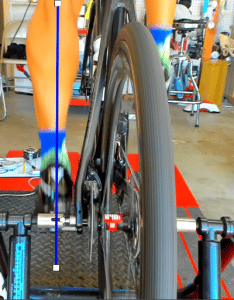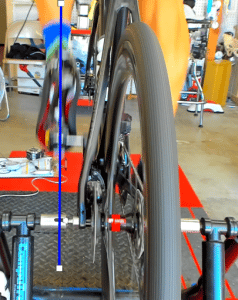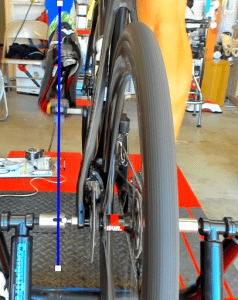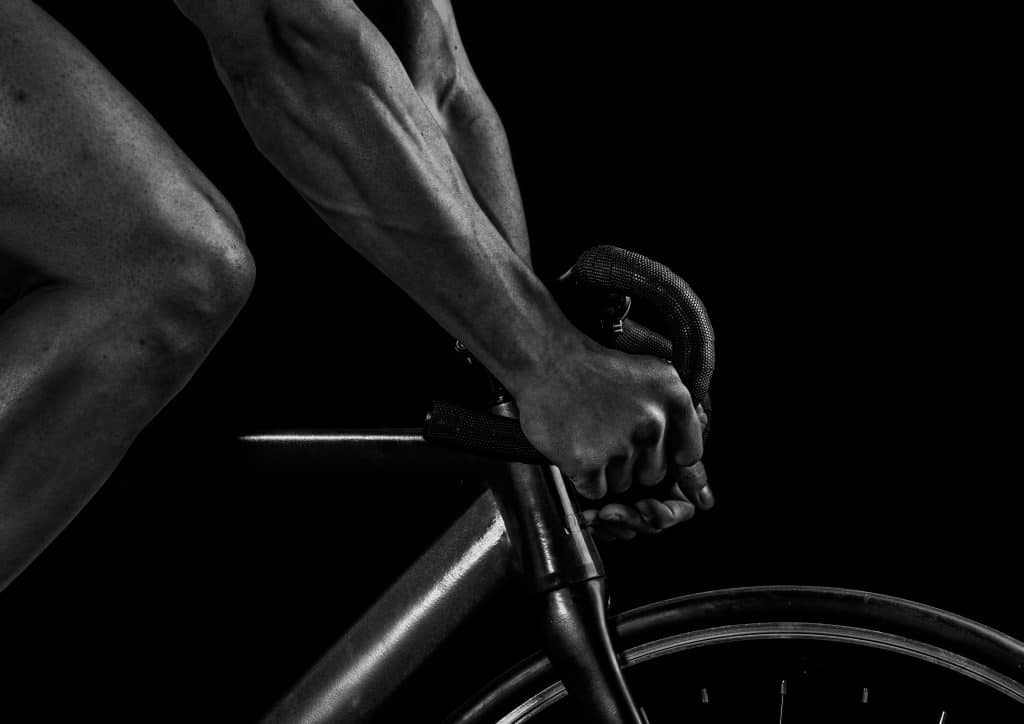Recently, I had a client come in for a new bike fit. He said he copied his old bike’s dimensions to his new bike but things didn’t quite feel the same or feel right. He said he felt awkward on the bike and most importantly saying “I’m slower on my new aero bike!”
I went to the computer and looked up the manufacturers geometry charts for each bike. As I guessed, they had a different stack & reach – the best way to compare modern day frame sizes. Since the frames are a little different, the angles were a little different as well. Being that he put the same size components on the new bike (stem, saddle, crank arms) he placed these into what he thought was the same position.
He was close, but far enough off that there would be a difference.
For my bike fits, I start with the cleats, move to the saddle then finally the cockpit. Double-checking his cleats, they looked perfect. Watching him pedal, I noticed that he was struggling a little, well, really a lot. Moving my camera to the rear of the bicycle, I noticed he had a lot of movement with his left heel. Note: on his old bike, he didn’t have this movement. I started capturing his motion and the fed the video into Dartfish.
The following images are screenshots from Dartfish Analysis screen.
1. Bottom of pedal stroke. Heel centered and aligned

2. Mid-pedal stroke. Heel starting to travel inward

3. Top of pedal stroke. Heel moving excessively inward

Next, I checked for pedal float. As you can see, he is using Speedplay pedals with no limit screws, allowing him to move his heels where they need to be.
Once the bike fit was completed, his heels were pretty much centered for the entire pedal stroke.
The solution(s)
1. Noticed during the interview and initial flexibility test, he had weak glutes and a weak core. I include this since most cyclists’ lower extremity muscles are tight and weak. I gave him a set of exercises for flexibility and strength.
2. The biggest change was to raise his saddle roughly 2cm. One thing contributing to heel movement was that he was sitting too low and his leg(s) were looking for somewhere to move to. Once we raised his saddle to the correct height, his heels stayed aligned and his knee tracking was straight.
With Dartfish, I was able to analyze the video and determine the problem and most importantly, affect a solution.
Rick Schultz, MBA, DBA
bikefitnesscoaching@gmail.com
www.bikefitnesscoaching.com
USA Cycling Level 2 Coach
Peaks Coaching Group Coach
Certified Power Based Training
Certified Skills Instructor
Beginner Racer Program Instructor/Coach
Certified Bike Fitter, IBFI Level 3.

Comments are closed.